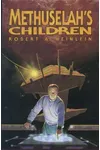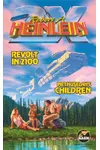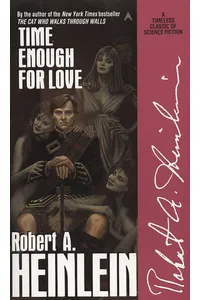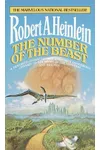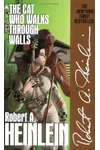Step into the thrilling world of Robert A. Heinlein’s Future History series, where humanity’s bold leap into the stars sparks a saga of innovation and rebellion! This iconic science fiction collection, spanning short stories and novels, charts our species’ journey from the mid-20th century to the 23rd century, blending visionary tech with gritty social struggles. First dreamed up in the 1940s, Future History remains a cornerstone of sci-fi that still feels eerily prescient today.
With its interconnected tales of space exploration, societal upheaval, and human resilience, Future History invites readers to ponder what’s next for us. Ready to explore a universe where lifespans are predicted and roads move like rivers? Let’s dive into Heinlein’s masterpiece!
How Future History Began
In the late 1930s, Robert A. Heinlein, a former naval officer turned sci-fi visionary, began crafting stories that would weave a grand tapestry of humanity’s future. Inspired by the rapid technological advances of his time and his libertarian ideals, Heinlein plotted a timeline from the 20th century onward, published in magazines like Astounding Science Fiction. Editor John W. Campbell Jr. coined the term 'Future History' in 1941, and Heinlein’s detailed chart of this fictional universe appeared in the May 1941 issue, setting the stage for a groundbreaking series.
Heinlein wrote most of these tales between 1939 and 1950, with stories later compiled in collections like The Past Through Tomorrow. His knack for blending hard science with social commentary made Future History a bold departure from the pulpy sci-fi of the era, earning it a nomination for the 1966 Hugo Award for Best All-Time Series.
The Heart of Future History
The Future History series unfolds through key works, each a snapshot of humanity’s evolving destiny. 'Life-Line' (1939), Heinlein’s debut, introduces Dr. Pinero, who invents a device to predict lifespans, shaking up society’s view of mortality. 'Let There Be Light' (1940) follows scientists inventing revolutionary light panels, outwitting corporate monopolies. The novel Methuselah’s Children (1941) tracks Lazarus Long, a near-immortal, as he leads a persecuted group of long-lived humans to the stars. Orphans of the Sky (1941), comprising 'Universe' and 'Common Sense,' depicts a lost generation ship where descendants forget their mission, living in a warped society.
Themes of technological progress, social cohesion, and individual liberty pulse through the series. Heinlein’s settings—sprawling space colonies, lunar outposts, and moving roadways—feel both futuristic and grounded. His functionalist lens, where societal roles define status, sparks debates about freedom versus order, while his foresight into tech like cell phones and waterbeds adds a prophetic edge. The series’ episodic style, tied by a shared timeline, offers a mosaic of humanity’s triumphs and struggles.
Why Future History Resonates
Future History’s impact lies in its bold vision and enduring relevance. By blending hard science with philosophical questions, Heinlein redefined sci-fi as a genre for serious ideas, influencing writers like Larry Niven and Joe Haldeman. Its 1966 Hugo nomination, though it lost to Asimov’s Foundation series, cemented its status as a genre titan. Fans still marvel at its predictions—nuclear power risks, labor disputes with robots, and lunar exploitation—many of which echo today’s headlines.
The series’ libertarian streak and moral dilemmas keep it alive in discussions about governance, technology, and human potential. Its niche yet devoted following cherishes its mix of adventure and intellect, making it a hidden gem for sci-fi enthusiasts seeking depth beyond flashy space operas.
- Publication Years: 1939–1950 (main stories), compiled in 1967
- Number of Works: Over 20 stories and novels
- Award: Nominated for 1966 Hugo Award for Best All-Time Series
- Key Collection: The Past Through Tomorrow
Grab 'Life-Line' or The Past Through Tomorrow and dive into Future History’s thrilling sci-fi universe! Whether you’re a tech geek or a dreamer of distant worlds, Heinlein’s saga awaits to spark your imagination.

